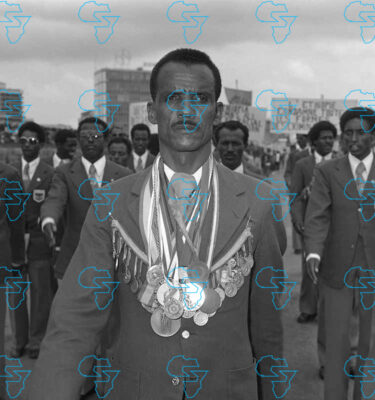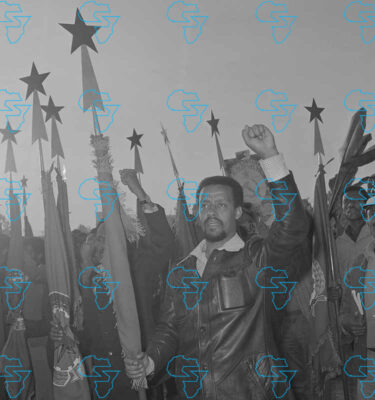
In the wake of the Pretoria Agreement, which brought brutal two-year civil war in northern Ethiopia to an end, there was a glimmer of hope that the country might finally be on a path toward lasting peace and reconciliation. However, the simmering tension between the Tigray Interim Administration (TIA) and leaders of the Tigray People’s Liberation Front (TPLF), which recently came to a head, have exposed deep fissures within the region, threatening to undo the fragile progress made since the ceasefire. Amidst this escalating feud, the preferred reaction of the federal government has largely been to remain silent, except the occasional condemnation of the TPLF leadership, though it has attempted to manage the crisis through informal means, albeit unsuccessfully. This approach is deeply concerning as it has played a part in exacerbating the crisis, undermining trust in the peace process, and jeopardizing the stability of the entire Horn of Africa.
The roots of the current tension lie in the complex and often contentious relationship between the TPLF, which dominated Ethiopian politics for nearly three decades, and the TIA, which was established as part of the Pretoria Agreement to oversee the region’s transition to normalcy. While the TIA is tasked with implementing the peace deal and rebuilding Tigray, the TPLF remains a powerful political and military force, with many of its leaders deeply entrenched in the region’s governance and security structures. This overlapping of roles has created a power struggle, with both sides accusing the other of overstepping their mandates and undermining the peace process. In the past year or so, the dispute has escalated into public spats, with TPLF leaders criticizing the TIA for its handling of disarmament, demobilization and reintegration (DDR) efforts as well as the return of internally displaced persons (IDPs). Conversely, the TIA has accused the TPLF of obstructing its work, actively maintaining a parallel governance structure, and plotting to commit a coup d’état against it. Their acrimonious falling-out has spilled over into the public domain, with both sides using media platforms to air their grievances, further polarizing the population and creating an atmosphere of uncertainty and mistrust.
In such a volatile situation, the role of the federal government is critical. As the primary signatory to the Pretoria Agreement and the entity responsible for ensuring its implementation, it has a moral and political obligation to mediate between the feuding parties and prevent the situation from spiraling out of control. Its failure to step in and address the growing rift has not only been puzzling, but also a dereliction of duty, as it sends a message of indifference at a time when leadership and decisive action are urgently needed. The federal government’s course of action can be interpreted in several ways. Some argue that it reflects a deliberate strategy to avoid being drawn into the internal politics of Tigray, particularly given the TPLF’s historical dominance and the sensitivity of the region’s autonomy. Others suggest that it may be preoccupied with such other pressing issues as the ongoing conflicts in the Amhara and Oromia regions, or the economic challenges facing the country. However, these explanations do not absolve it of its responsibility to address the situation in Tigray. The peace process is too important to be left to collapse, and the consequences of dithering are bound to be catastrophic.
One of the immediate downsides of the government’s conspicuous inaction is the erosion of trust in the peace process. Inasmuch as the Pretoria Agreement was hailed as a landmark achievement, its success hinges on the willingness of all parties to uphold its provisions. Declining to engage in a principled intervention in the feud between the TIA and TPLF gives rise to the perception that the government is not fully invested in seeing that the agreement is given effect to, leading to further polarization and potentially even a return to violence. Moreover, its studied silence, partly driven by misplaced sanguinity, undermines its credibility as a neutral arbiter. The Pretoria Agreement was brokered with the understanding that the federal government is committed to its full implementation. By remaining silent, the government is effectively abdicating this responsibility, leaving the TIA and TPLF to resolve their differences on their own. This not only weakens the TIA’s authority, but also raises questions about its desire to see through the peace process.
The implications of the government’s inaction extend beyond Tigray. Ethiopia is a linchpin of stability in the Horn of Africa, and any escalation of tensions in Tigray could have regional repercussions. Aside from claiming the lives of hundreds of thousands, the conflict has displaced millions of people and created a humanitarian crisis that has strained the resources of neighboring countries. A return to violence in Tigray could trigger a new wave of refugees, further destabilizing the region and undermining efforts to promote peace and development. In addition, the government’s silence can potentially alienate the international community, which has contributed significantly to supporting the peace process. Donor countries and organizations have provided billions of dollars in aid to help rebuild Tigray and address the humanitarian crisis. However, their continued assistance is contingent on its commitment to the peace process. If the latter is perceived as being indifferent to the situation in Tigray, it could jeopardize future aid and undermine Ethiopia’s standing on the global stage.
The federal government must break its silence and take decisive action to address the feud between the TIA and TPLF. This encompasses, among others, engaging with both parties to mediate their differences, reaffirming its commitment to the Pretoria Agreement, and providing the necessary support to assure it is executed to its letter and spirit. It should also endeavor to build trust and confidence among the people of Tigray by addressing their grievances and ensuring that their voices are heard in the peace process. The stakes are too high for the government to remain on the sidelines. The people of Tigray have endured unimaginable suffering, and they deserve a chance to rebuild their lives in peace. As such it is incumbent on the federal government to see to it that this opportunity is not squandered. If it does everything it can towards this end, efforts to heal the wounds of the past and usher in an era of peace can be laid on a solid foundation. The time to act is now.
.
.
.
#Time #Silence
Source link











